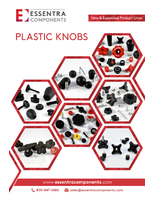NEMA reiterates that light bulb efficiency standards remain.
Press Release Summary:
NEMA remains committed to lighting standards established in Energy Independence and Security Act of 2007. Rider related to light bulbs on FY 2012 Omnibus funding bill does not repeal or adjust standards or their effective timeline, but imposes funding limitations on DOE to enforce standards for FY2012. Inability of DOE to enforce standards would allow those who do not respect rule of law to sell inefficient light bulbs in U.S., creating competitive disadvantage for compliant manufacturers.
Original Press Release:
NEMA Reiterates that Light Bulb Efficiency Standards Remain, Consumers Retain Diverse Options for Efficient Light Bulbs
Omnibus Bill Restricts DOE Funding on Enforcement
ROSSLYN, Va., -The National Electrical Manufacturers Association (NEMA), representing more than 95 percent of the U.S. lighting manufacturing industry, remains committed to and supportive of the lighting standards established in the Energy Independence and Security Act of 2007 (EISA 2007).
A rider related to light bulbs on the FY 2012 Omnibus funding bill does not repeal or adjust the standards themselves or their effective timeline. NEMA did not support the inclusion of this rider, which imposes funding limitations on the Department of Energy (DOE) to enforce the light bulb standards for FY2012. This raises numerous concerns:
o American manufacturers have invested millions of dollars in transitioning to energy efficient lighting as a result of the EISA 2007 provision. Delay in enforcement undermines those investments and creates regulatory uncertainty.
o The inability of DOE to enforce the standards would allow those who do not respect the rule of law to sell inefficient light bulbs in the U.S. without fear of enforcement, creating a competitive disadvantage for compliant manufacturers.
o EISA 2007 gave state attorneys general the authority to enforce the standards. A lack of DOE enforcement will create consumer confusion resulting from a patchwork of state enforcement and place manufacturers in an intolerable position due to uneven and potentially unpredictable enforcement.
NEMA reiterates that EISA 2007 does not ban incandescent light bulbs. Consumers will have expanded lighting options that include energy-efficient advanced incandescent, compact florescent lights (CFLs), and new lighting technologies such as light-emitting diodes (LEDs).
Lighting accounts for about 12 percent of energy use in homes. While individual home usage varies, it is estimated that the average household savings associated with this transition is more than $100 per year, every year going forward.
Overall, national energy savings from the new standards is estimated at $10-15 billion per year, depending on assumptions of usage and which technology is selected to replace traditional incandescent bulbs.
NEMA is the association of electrical equipment manufacturers, founded in 1926 and headquartered in Arlington, Virginia. Its member companies manufacture a diverse set of products including power transmission and distribution equipment, lighting systems, factory automation and control systems, and medical diagnostic imaging systems. Worldwide annual sales of NEMA-scope products exceed $120 billion.
NEMA. Setting Standards for Excellence
Visit our website at www.nema.org




